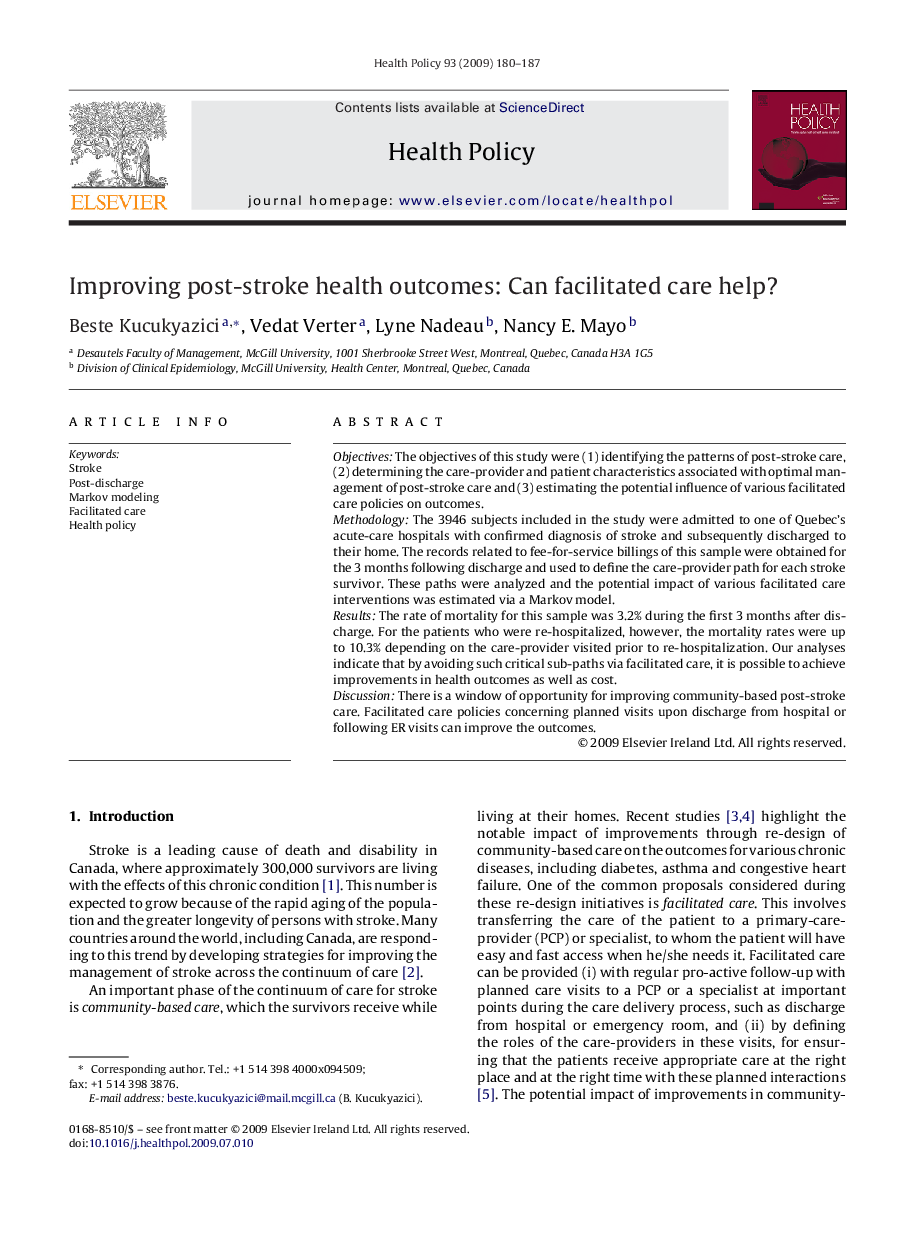| کد مقاله | کد نشریه | سال انتشار | مقاله انگلیسی | نسخه تمام متن |
|---|---|---|---|---|
| 6240217 | 1609033 | 2009 | 8 صفحه PDF | دانلود رایگان |

ObjectivesThe objectives of this study were (1) identifying the patterns of post-stroke care, (2) determining the care-provider and patient characteristics associated with optimal management of post-stroke care and (3) estimating the potential influence of various facilitated care policies on outcomes.MethodologyThe 3946 subjects included in the study were admitted to one of Quebec's acute-care hospitals with confirmed diagnosis of stroke and subsequently discharged to their home. The records related to fee-for-service billings of this sample were obtained for the 3 months following discharge and used to define the care-provider path for each stroke survivor. These paths were analyzed and the potential impact of various facilitated care interventions was estimated via a Markov model.ResultsThe rate of mortality for this sample was 3.2% during the first 3 months after discharge. For the patients who were re-hospitalized, however, the mortality rates were up to 10.3% depending on the care-provider visited prior to re-hospitalization. Our analyses indicate that by avoiding such critical sub-paths via facilitated care, it is possible to achieve improvements in health outcomes as well as cost.DiscussionThere is a window of opportunity for improving community-based post-stroke care. Facilitated care policies concerning planned visits upon discharge from hospital or following ER visits can improve the outcomes.
Journal: Health Policy - Volume 93, Issues 2â3, December 2009, Pages 180-187